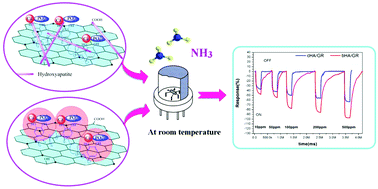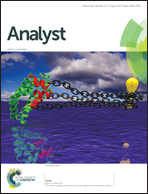Facile and controllable synthesis of hydroxyapatite/graphene hybrid materials with enhanced sensing performance towards ammonia†
Abstract
In this work, needle-like and micro-spherical agglomerates of nanocrystalline hydroxyapatite (HA) were successfully assembled on the surface of graphene sheets with the aid of dopamine having two roles, as a template and a reductant for graphite oxide during the process of self-polymerization. The crystalline structure and micromorphology of HA can be conveniently regulated by controlling the mineralization route either with a precipitation (cHA/GR) or biomimetic methodology (bHA/GR). Both the composites exhibit improvements of ∼150% and ∼250% in sensitivity towards the sensing of ammonia at room temperature, compared with that of bare graphene. The combination of the multi-adsorption capability of HA and the electric conductivity of graphene is proposed to be the major reason for the observed enhancements. Gas sensing tests demonstrated that the HA/GR composites exhibit excellent selectivity, high sensitivity and repeatable stability towards the analytical sensing of ammonia.


 Please wait while we load your content...
Please wait while we load your content...